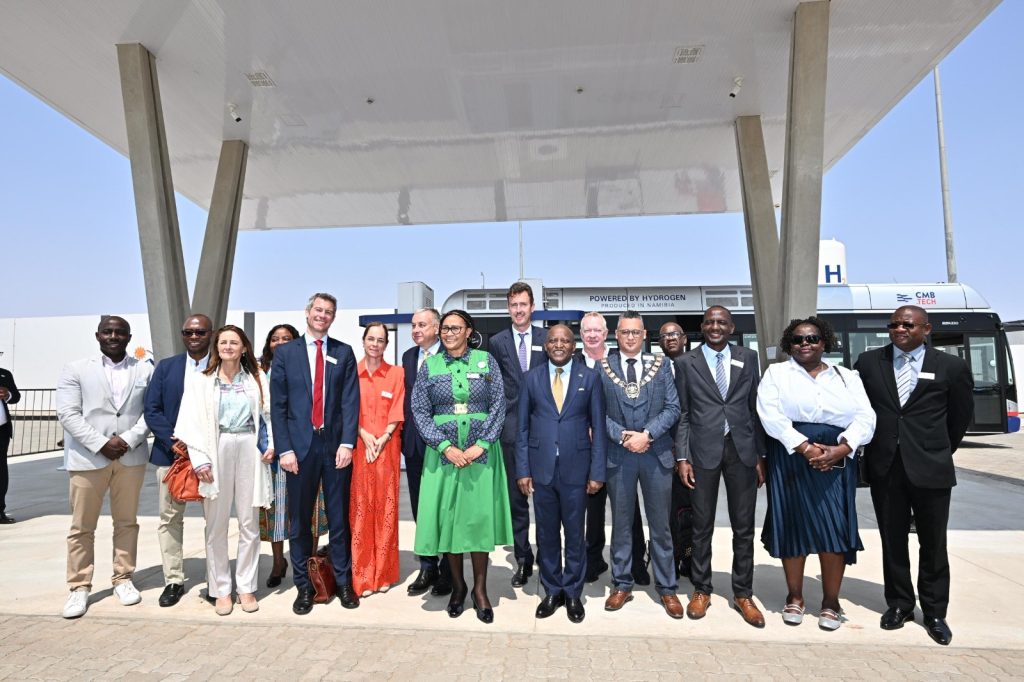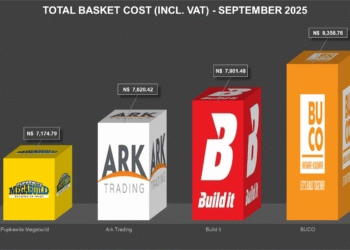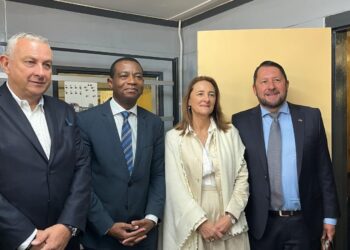
The European Union has mobilised €1.3 billion (N$25 billion) in loans and grants under its Global Gateway agenda, aimed at unlocking more than €20 billion (N$400 billion) in potential private investment for Namibia’s green industrialisation.
The funding supports Cleanergy Solutions Namibia, the country’s first large-scale solar-powered green hydrogen facility, inaugurated on Thursday in Walvis Bay.
The project is a joint venture between Belgian company CMB.Tech and Namibia’s Ohlthaver & List Group, with additional grant support from Germany’s Federal Ministry of Research, Technology and Space.
Prime Minister Elijah Ngurare said the initiative demonstrates how green hydrogen can drive socio-economic development.
“Cleanergy Solutions Namibia demonstrates how investment in green hydrogen can create jobs, build skills and empower our people while positioning Namibia as a global leader in sustainable energy. With the support of the European Union and our partners, Namibia is showing that Africa can be at the forefront of the green industrial revolution,” he said.
European Commissioner for International Partnerships, Jozef Síkela, said the project would strengthen Namibia’s role in global energy markets.
“This project is the beginning of green hydrogen and ammonia production in Namibia. It will help position Namibia as a leader in green hydrogen, strengthen trade and innovation links with Europe,” he said.
Síkela added that the EU aims to realise the sector’s full potential.
“Under Global Gateway we are doing our best to tackle it with our 360-degree approach supporting education, training, regulatory framework, to create new jobs and boost local businesses,” he noted.
The facility will produce green hydrogen and ammonia for maritime shipping and will include a refuelling station at Walvis Bay for trucks, port equipment, rail applications and small ships. Expansion plans cover an ammonia jetty, storage facilities and scaled production for export to South Africa and Europe, representing an estimated €3 billion investment.
European Parliament Development Committee Chair, Barry Andrews, said the project was a model of innovation and partnership.
“What we have seen today is a prime example of the kind of courageous and innovative investments that can make a real difference, by addressing the climate crisis, promoting human development and transforming production and consumption patterns both in Namibia and in Europe. Today’s inauguration will hopefully send a strong and united signal: more sustainable and mutually beneficial value chains can be developed, in full respect of international commitments and shared values,” he said.
A Hydrogen Academy has been established at the site to train Namibian engineers, technicians and operators in partnership with European and local institutions.
Alexandre Saverys, CEO of CMB.Tech, said the project reflected the strength of Africa-European ties.
“Today marks a proud moment for all of us. This facility is the result of true international collaboration – combining Namibian ambition and European innovation. It’s a model for sustainable energy and a symbol of strong Africa-European ties,” he said.
The EU and Namibia celebrate 35 years of bilateral relations this year, with Team Europe remaining Namibia’s largest trade and development partner.













